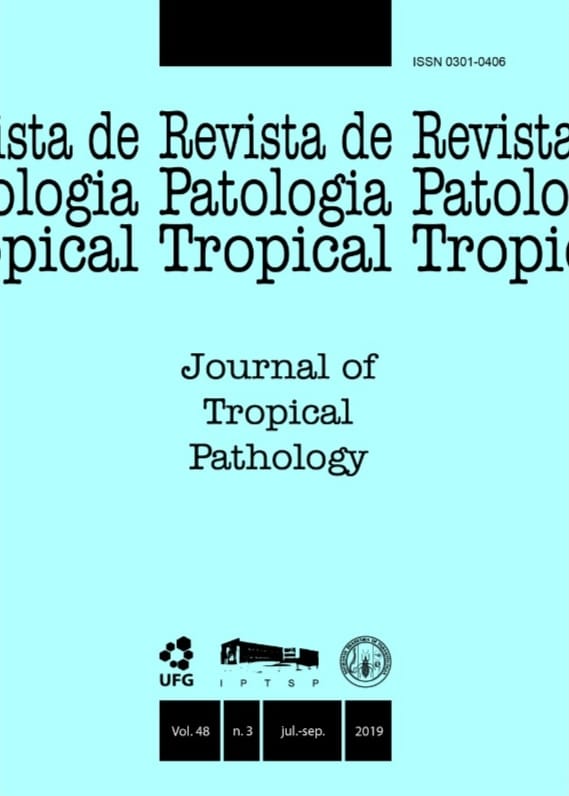DETECTION OF A Rickettsia GENOTYPE RELATED TO THE OLD WORLD INFECTING Amblyomma sculptum TICK IN AN ENDEMIC AREA OF BRAZILIAN SPOTTED FEVER
DOI:
https://doi.org/10.5216/rpt.v48i3.59123Abstract
Brazilian Spotted Fever is an important tick-borne disease caused by Rickettsia rickettsii and transmitted mainly by the human-biting tick Amblyomma sculptum. During an epidemiological surveillance in Pedro Leopoldo, an endemic area of Minas Gerais State, southeastern Brazil, ectoparasites were collected from vertebrate hosts and from the environment. Rickettsial genes were obtained from a male A. sculptum and the resulting phylogenetic tree grouped this bacterium with Rickettsia sp. isolate Pampulha, a strain closely related to the pathogenic species Rickettsia tamurae and Rickettsia monacensis. This is the first report of sequences
phylogenetically related to R. tamurae and R. monacensis infecting A. sculptum in Brazil.
KEY WORDS: Spotted Fever Group Rickettsia; Amblyomma sculptum; Spotted Fever focus;
Ixodidae; Brazil.
Downloads
Downloads
Published
How to Cite
Issue
Section
License
The manuscript submission must be accompanied by a letter signed by all authors stating the full name and email address, confirming that the material has not been published or is under consideration for publication elsewhere, and agreeing to transfer copyright in all media and formats for Journal of Tropical Pathology. The authors will not be paid for published articles. They are solely responsible for the content of those articles, even if the Editor holds the right to adjust them to the norms of the journal.
The reviewers will not be paid for the peer review process.

